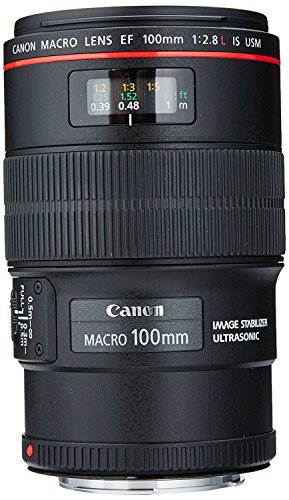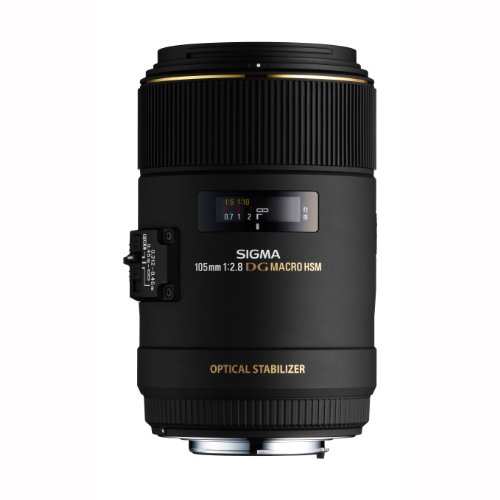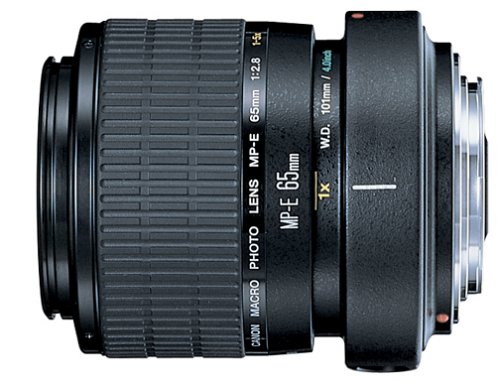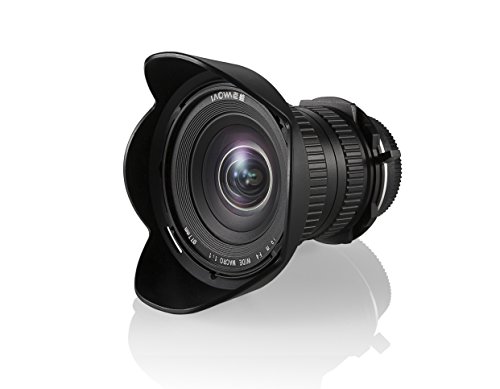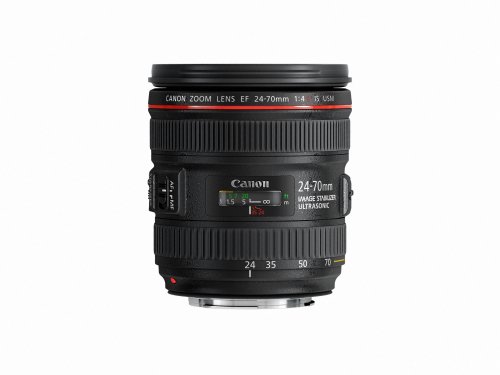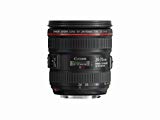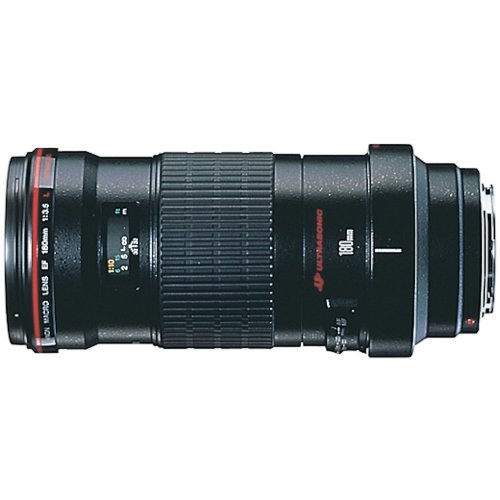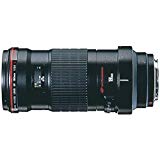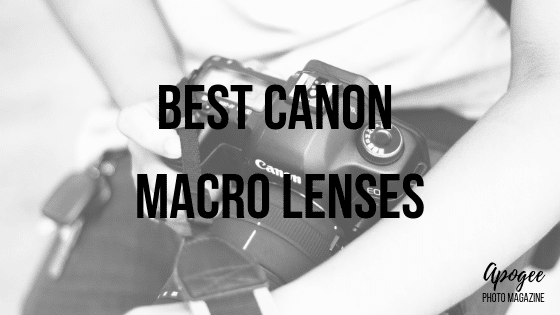 Macro lenses are camera lenses designed to achieve extreme close-ups on a subject. Traditional lenses are usually optimized to maximize image quality out to infinity. After all, the purpose of most lenses is to capture distant subjects. Macro lenses, on the other hand, work to bring out details from subjects up close to the camera.
Macro lenses are camera lenses designed to achieve extreme close-ups on a subject. Traditional lenses are usually optimized to maximize image quality out to infinity. After all, the purpose of most lenses is to capture distant subjects. Macro lenses, on the other hand, work to bring out details from subjects up close to the camera.
A “true macro” lens has 1:1 magnification or greater, which means that the lens is creating a true to life-sized image on the sensor of the camera. Other macro lenses might only create a 1:2 (1/2 life size) or even 1:3 projections. But they still do better than your average lens at creating a large image full of rich details from up close.
Canon has one of the largest selections of lenses available from any lens manufacturer, and macro lenses are no exception. From wide angle primes, macro zooms and long-range telephoto lenses, there’s a Canon lens for every purpose. But before you pick up your lens, do you know what qualities you’re looking for?
Macro Prime vs. Macro Zoom
Initially, the choice seems like an obvious one: a macro zoom has a focal range that gives you added versatility. A prime lens, on the other hand, is set to a single focal length. Why would you ever give up that range for a macro prime lens?
Lens design has to do with finding the best possible compromise between image quality and features. All lenses aim to maximize image quality while reducing or negating chromatic aberration and optical distortions. When you change the focal length of your lens the distortions the lens seeks to correct are also altered. The lens now has to make constant adjustments throughout the zoom range, which may not always result in optimal image quality.
If you’re looking for a single or couple good walk around lenses, a focal range of 24-70mm and aperture of f/2.8 is a good place to start looking. But finding this combination in a macro lens is rather difficult. The Canon 24-70mm f/4 is the nearest thing to a macro zoom you’re going to find as the f/2.8 version doesn’t offer enough magnification. There are always compromises when it comes to lens shopping.
And buying zoom lenses, unfortunately, means there are even more compromises to navigate. These often include losses in sharpness and chromatic accuracy, especially in cheaper lenses. But if you’re a hobbyist shooter, the benefits may outweigh the drawbacks for you.
Having a zoom lens often means not having to carry 2-3 prime lenses in your bag. And the highest quality zooms can reduce or negate the optical benefits of an equivalent prime lens, if not the cost.
Lens Focal Length
Whether you want a macro prime or zoom, you’ll need to give some thought to what focal length you want. And this depends mostly on your subject matter as well as your operating distance. If you want close-ups of flowers, wood and stone textures, and other generalist uses, a lens in the range of 35-50mm will work nicely.
If your subjects are skittish or otherwise can’t get too close, then look at lenses with longer focal lengths. 90-105mm works nicely for insects and other animals that may be skittish in the field. The minimum focusing distance is something you want to look at.
The more distance you need from your subject, the longer the focal length you should be considering. They generally peak at around 180-200mm. Macro lenses often have wider apertures, which give a nice shallow depth of field for portrait photography as well.
Just keep in mind that the depth of field shrinks slightly when working with close up objects in 1:1 reproduction. For those who don’t know, depth of field in photography is how much of a given scene is in sharp focus. f/2.8 is relatively shallow in portraiture; but in macro photography, it may be a smaller slice of a subject than you might expect. Stopping down the lens or simply getting a narrower aperture will not only improve sharpness but also save you money; wider apertures are almost always more expensive.
The narrower depth of field also means your subject appears much more isolated when using a lens with a longer focal length. f/2.8 on a 50mm will give an entirely different look from f/2.8 on a 180mm lens in terms of depth of field as well as how out of focus the background appears. Both focal lengths can find a place in your lens collection, but it’s a great idea to rent or borrow a few lenses and see what sort of photos they create before committing.
Weatherization
Macro photography can involve being in the outdoors quite often. When you’re shooting, and it starts to rain having gear that’s weather sealed can make the difference between scrambling for cover and adding macro photos of water droplets to your collection.
Many mid to higher end macro lenses come with weatherization that includes rubberized seals to prevent dust or moisture from penetrating the inner elements of the lens. They can add some weight and cost depending on the make of the lens, but it’s well worth the investment if a particular aperture/focal length comes weatherized.
Canon Brand vs. Third-Party
This is a question that every modern electronics owner will face at some point or another. Is it worth saving a bit of money and buying a third-party lens? Or should I stick to Canon lenses for my Canon DLSR camera body?
And the answer is: it depends. Canon’s lens selection is massive. But there will occasionally be gaps in aperture or focal lengths that you may not have easy access to. Third-party lenses often fill those gaps for you and at discounts of 30-50% compared to Canon brand gear.
But that cost savings sometimes comes at the price of build quality. You may find that the third-party version of a great aperture/focal range combination has a plastic construction and feels cheap and light in comparison to the Canon model.
Compatibility is another major factor when it comes to in-brand purchases. If I buy a Canon macro lens I can be assured that all of the functions of the camera will be 100% compatible.
Sometimes when buying third-party advanced image stabilization (if your camera is sensor stabilized) and autofocus features may not operate perfectly, even if the lens attaches and seems to work fine. If you see IS in the title of your Canon brand lens you know it also comes with hardware stabilizing elements. And USM (Silent Wave Motor) is a huge advantage for quiet autofocusing.
Canon EF vs. EF-S
While there’s a dizzying array of acronyms, the difference here is quite simple. Canon EF lenses are meant to be used with full-frame Canon DSLR bodies with a 35mm field of view, like the 6D Mark II. Cropped sensors like the Canon Rebel series use a sensor sized 22.20 x 14.80mm.
All of the high-quality L series lenses are for EF bodies. Fortunately, EF lenses can also be used with EF-S (cropped) cameras because the field of view created by the lens is larger than the camera’s sensor.
EF-S lenses tend to be cheaper and lighter than their EF counterparts. But EF-S lenses can’t be used on an EF body. The result would be vignetting (darkening of the borders of the photograph) due to the smaller image circle of the EF-S lens.
Best Short Telephoto Macro Prime
Canon EF 100mm f/2.8L Macro IS USM
The red stripe on the lens lets everyone know you’re shooting with a professional lens. Canon’s L (luxury) lenses are all wide aperture lenses (or fixed aperture if it’s a zoom lens) and use the highest quality glass to prevent chromatic aberrations. The f/2.8 Macro IS USM is also weatherized in order to avoid light rain and dust from ruining your photoshoot.
Just keep in mind that with any weatherized lens the body needs to also be sealed, or you’re asking for trouble. The weatherization combined with the specialized optics gives it a hefty 625 g weight.
This lens uses a hybrid stabilization system optimized for close range photography, compensating for both linear and rotational shake. Combined with the true macro 1:1 magnification (at a minimum focusing distance of 11.8 in.) the EF 100mm f/2.8 lives up to the expectations you’d have of the Canon L series. The IS of this lens offers a range of stabilization capacity.
On long-distance subjects, you can expect up to 4 stops of stabilization. This decreases down to 2 stops when focusing on closer subjects. A tripod is still a safe bet when using this subject for macro imagery.
- 100 mm focal length and 1:2.8 maximum aperture. The EF1.4X II/EF2X II extenders cannot be used with this lens. There are no compatible close-up lenses.
- Lens construction consists of 15 elements in 12 groups.
- 23.4-Degree diagonal angle of view
- Inner focusing system with USM and full-time manual focus option.Closest focusing distance 0.99 ft./0.3m (maximum close-up magnification: 1x)
- 67 mm filter size
Alternate Choice: Sigma 105mm F2.8 EX DG OS HSM Macro
With nearly identical specifications to the Canon EF 100mm f/2.8L, this Sigma 105mm F2.8 is well worth considering. As a third-party lens, it’s somewhat easier on the wallet than the Canon. And at 425 g., the Sigma is significantly lighter as well, pairing well with lighter DSLR bodies, like the entry-level Rebel series. The minimum operating distance is 12.3 in. or 4.8 in. from the end of the lens, slightly further than the Canon’s working distance but not by much.
Like the Canon L lens above, Sigma’s macro lens includes a focus limit switch. These are quite handy for helping the lens lock onto autofocus faster by specifying the distance that the lens will find focus at. The “limit” option directs the lens only to find focus up to 2.5 in. past the minimum focusing distance. This is perfect for your close-up macro work and keeps the lens from taking longer than necessary. Full focusing allows focus out to infinity for long distance shots.
As a true 1:1 macro lens you’re getting the same life-size images that you would with the Canon, and the f/2.8 aperture is nice and wide. One downside is that the autofocus performance of the Sigma 105mm is not quite as good as the Canon 105mm. When creating macro images, you may be better off sticking to manual focus.
Just be aware that unlike the Canon the Sigma f/2.8 Macro telescopes outwards as far as 1.8 in. while focusing, which may affect extreme close-up subjects. Other than that the Sigma is a solid alternative to the Canon offering.
- Designed for use with full frame digital SLR cameras. May also be used with smaller APS-c size sensors with a corresponding effective increase in focal length to about 150mm with most cameras
- Focuses down to 1:1 magnification ratio at its closest working distance of 12.3 inches
- A hood adapter, lens hood, front & rear lens caps are included with the lens
- Filter size 62mm
Best Extreme Macro Prime Lens
Canon MP-E 65mm 1-5x Macro Lens
“Extreme Macro” is exactly what it sounds like: making images that are larger than life and full of vibrant details. The Canon MP-E 65mm 1-5x Macro is one of the best on the market, with an astonishing 5:1 maximum magnification. The lens is manual focus only but has incredible creative potential at the cost of some of the functionality standard macro lenses have.
Using a lens with this level of magnification means the depth of field is unusably shallow for anything, but the most well-considered photography subjects. Forget living subjects; with the aperture fully open at 5x magnification you’re looking at around 0.48mm of effective depth of field. If you instead stop down the lens to f/16, the in-focus slice improves to around.27mm at 5x magnification and up to 2.24mm at 1x (1:1 macro).
And unlike the other lenses reviewed you’re not going to be able to use this as a portrait lens; this is more like a microscope attached to your camera. But it does open up a wonderful world of snowflakes, salt crystals, the compound eyes and hairs of (dead) insects, and other details that 1:1 macro lenses can’t quite capture. True macro lovers should definitely take this lens out for a test drive.
Best Wide-Angle Macro Prime Lens
Venus Optics Laowa 15mm f/4 Macro Lens
Dubbed “the world’s first ultra-wide angle with 1:1 macro magnification,” Venus Optics has come out with a unique lens. When shooting wide-angle, it’s important to remember that each reduction in focal length is far more pronounced compared to telephoto lengths. If we compare the field of view the Canon 20mm has vs. the Venus Optics 15mm, you’ll see a huge difference relative to, say, a 190mm vs. 200mm lens.
15mm is a great point for landscape lovers. While the f/4 minimum aperture isn’t overly wide landscape images usually work best with more depth of field. But for macro images, the wide angle field of view means you’ll be able to create some very intriguing compositions. Subjects will appear almost gigantic, giving a bug’s eye view when shooting flowers, for example. The minimum focusing distance is only 4.7 in., allowing you to get super close so long as your subjects aren’t too skittish.
Like many non-standard third-party lenses, this macro is manual focusing only, which will slow your workflow down. Some people can’t stand using manual focus, but with tools like focus peaking available in many cameras, it’s easier than ever to shoot with little fear of missing the shot. The Laowa is cheaper than the Canon 20mm, but only by around $100; plus the Canon is old enough that a good used copy may negate the savings over the manual focus Laowa.
One notable drawback that may be a creative perk for macro photography in the right light is the apparent levels of barrel distortion. Barrel distortion manifests in most wide angle lenses. Because the field of view is smaller than the sensor, the lens has to “cram” the image onto the sensor; this effect is most obvious when viewing straight lines.
Many lenses can minimize this effect, but it’s so prevalent with the Laowa that it’s not ideal for architecture photography. But the faint fish-eye effect may be appealing for macro lovers looking to highlight their subjects.
Best Macro Zoom Lens
Canon EF 24-70mm f/4L IS USM Lens
Canon continues to provide great lens options, and while most zoom lenses aren’t overly good at macro photography, the Canon EF 24-70mm f/4L is one worth looking at. Lens shopper that aren’t too intimidated by the cost will immediately look towards the Canon 24-70mm f/2.8 and wonder why not simply jump to the wider aperture version?
In terms of sheer versatility in exposure, the f/2.8 can’t be beaten. Yet the f/4 has an added benefit. While it’s not a true 1:1 macro lens it does have .70x magnification which is excellent for a lens that isn’t a true macro. The f/2.8, on the other hand, lets in twice as much light at maximum aperture but only has 0.29x magnification, making it less suitable for our purposes.
IS also means the lens is image stabilized and uses the hybrid IS design of Canon’s best lenses. If you don’t mind losing out on true 1:1 macro and a shallower depth of field/better exposure the Canon EF 24-70mm f/4 is one of the best zoom “macro” lenses on the market for Canon DSLRs. And the focal range ensures it will be usable for the majority of your non-macro shoots as well. 24-70mm encompasses everything from landscapes to portraits and is an extremely versatile combination.
- L Series standard zoom lens delivers superb image quality in a compact, lightweightdesign
- Focal Length & Maximum Aperture: 24-70mm, 1:4, Closest Focusing Distance: 1.25 ft. / 0.38m
- 2 aspheric and 2 UD lens elements for high image quality throughout the entire zoom range
- Full macro shooting mode with up to 0.7x magnification,easily accessible with a one touch switch at the extreme telephoto end, Image stabilization effective up to 4 shutters peed stops and Hybrid IS compensates for both angular and shift types of camera shake for macro shooting
- Resistant to dust and water, enabling shooting even in harsh and rigorous conditions
Best Long Telephoto Macro Prime Lens
Canon EF 180mm f/3.5L USM Macro Lens
This lens has the longest focal length, with 1:1 magnification available for Canon products. The 180mm focal length ensures you can work from a distance on both macro and portrait subjects. As a true macro lens, the Canon EF 180mm has 1:1 magnification for life-size reproduction. The minimum focusing distance is 1.6 ft. before taking into account the length of the lens. You can use the focus limiter switch to choose between 1.6 ft.-infinity or 4.9 ft.-infinity to quicken the autofocus pace.
One notable feature of this lens is the f/32 minimum aperture. Many lenses max out at around f/22 or less. Remember how when using a macro lens the depth of field gets smaller when the focal length gets longer? f/32 on this 180mm lens is ideal for creating a large enough depth of field while shooting in macro mode to capture most if not all of the details of your target. And the f/3.5 aperture is medium-fast in terms of exposure but will create a beautifully isolating depth of field for your portrait and macro subjects as needed.
Lastly, as an L-series lens, the EF 180mm is weather sealed to allow you to shoot in any weather conditions. The focal range makes it well suited for a wildlife lens but adding a 1.4x or 2.0x teleconverter to increase the effective focal length of the lens will give better results with shy subjects.
- 180mm macro lens with f/3.5 maximum aperture for Canon SLR cameras
- 3 UD glass elements and internal floating system combine to minimize aberrations
- Advanced ultra-sonic monitor (USM) for high-speed, quiet autofocusing
- Focusing distance range of 1.57 feet to infinity; supports EF Extender 1.4x and 2x
- Measures 3.2 inches in diameter and 7.3 inches long; weighs 2.4 pounds; 1-year warranty
Conclusion
Macro photography encompasses a very diverse range of subjects. Close-ups can be of nearly anything; the limit is your creative perspective. Insects and plants are some of the first things we think of, but fine details exist in everything around us. Something as simple as salt scattered on dark paper or the depths of an ice cube or mass of bubbles can result in absolutely incredible images.
Each of the lenses here is perfect for the right scene and subject. The Laowa 15mm brings a wide-angle perspective with significant barrel distortion but also lets you get extremely close to your subjects. Canon’s MP-E breaks the bounds of 1:1 macro with a microscopic 5:1 magnification ratio, so long as you don’t mind using manual focus exclusively.
The short and long telephoto options give photographers varying amounts of working distance between them and their subjects. And the EF 24-70mm f/4 is a versatile walk around lens that also gives great macro reproduction even if it’s not a true 1:1 lens.
Lens mount adapters also open up a whole new world of macro lenses for the Canon user. With the right adapter, I might be tempted by the Nikon AF Micro-NIKKOR 200mm f/4D lens over the Canon 180mm. Other third-party options exist that didn’t make the cut but encompass 35mm, 60mm, and even 4.5:1 super macros like the Mitakon Zhongyi 20mm f/2. The macro world is full of great choices; we’ve listed our favorites here, but continue to explore and see what works for your Canon DLSR!
https://www.apogeephoto.com/canon-macro-lens/


